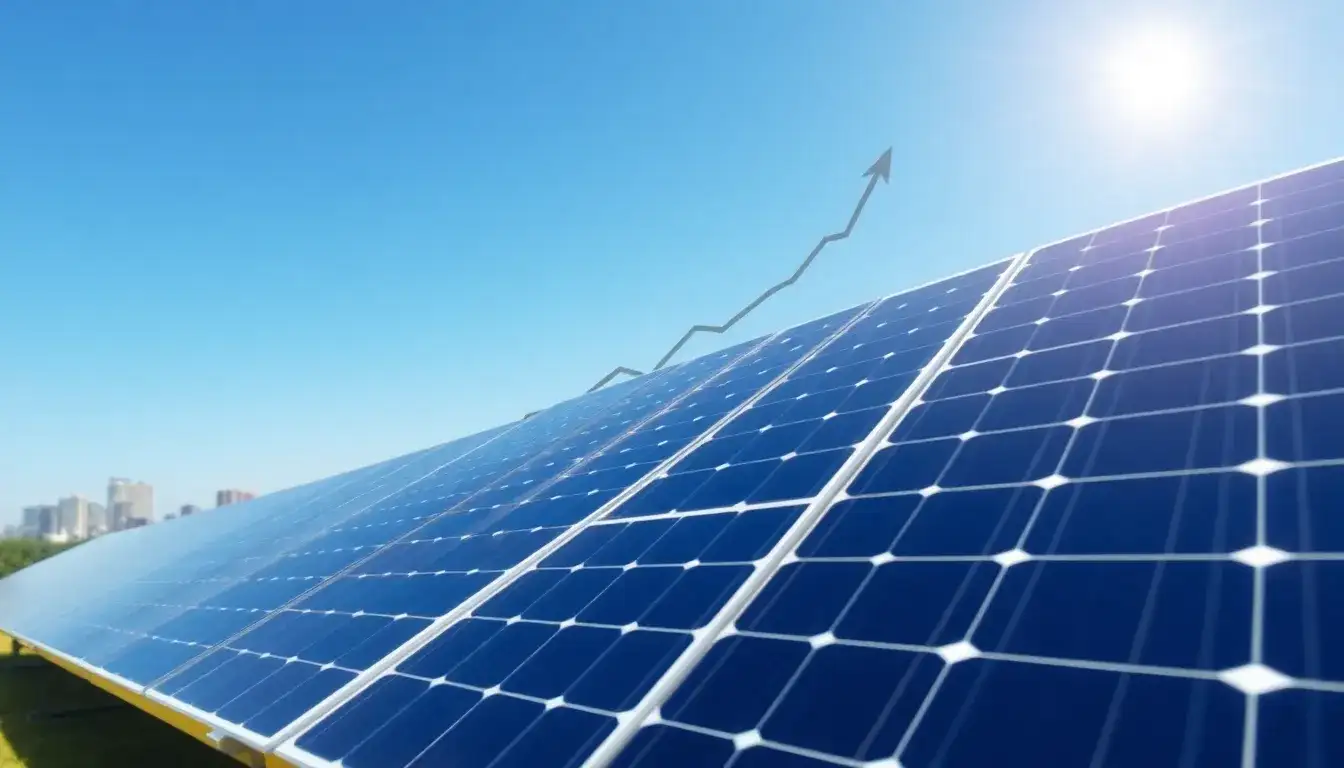
The photovoltaic industry chain is making headlines with significant news. Recently, a surge in prices has occurred within the photovoltaic sector, drawing attention from various stakeholders. According to the latest data from InfoLink Consulting, prices for products in the downstream segments of the industry chain have risen to varying degrees. Notably, the spot price for mainstream distributed components in March has reached 0.8 yuan/W, which marks an increase of over 33% from the low of 0.6 yuan/W at the end of 2024.
Analysis indicates that domestic policy influences have led to a rush for installations, especially in the distributed market, resulting in a noticeable rebound in orders from March to April. Industry insiders anticipate that this price fluctuation may persist for about a month, with a return to reasonable pricing expected by late April. However, the overall price trend for the year remains uncertain.
Price Surge Impact
The recent rush for installations in the photovoltaic sector has led to a continuous increase in supply chain prices. InfoLink Consulting’s latest pricing data reveals that products in the downstream segments of the industry chain have experienced various levels of price hikes.
With key policy dates approaching on April 30 and May 31, the photovoltaic industry is seeing a surge in installations. Supply tightness is evident, with some downstream distributors reporting minimal stock of components, and larger components are largely out of stock, requiring advance orders to secure supplies.
InfoLink Consulting noted that the surge in demand driven by the installation rush and rising prices in the battery segment has led to continuous increases in silicon wafer prices over the past week. In the component segment, a limited number of high-priced orders ranging from 0.78 yuan/W to 0.8 yuan/W have been placed, but large-volume transactions have not yet occurred.
As per InfoLink’s latest data, the spot price for mainstream distributed components in March has hit 0.8 yuan/W, which is over 33% higher than the low of 0.6 yuan/W at the end of 2024. Additionally, the price for Longi Green Energy’s Hi-MOX10 anti-dust components has reached 0.85 to 0.9 yuan/W, marking a two-year high.
Upstream products, including N-type battery cells, silicon wafers, inverters, adhesive films, EVA, and photovoltaic glass, have also seen price increases. For instance, the average price of 182*210mm TOPCon battery cells has risen for five consecutive weeks, showing an increase of 0.05 yuan/W. The G12RN silicon wafer has experienced two price hikes in March, totaling 0.1 yuan/W. The price of photovoltaic-grade EVA has risen by 248.57 yuan per ton in just two weeks.
Additionally, silicon material prices are showing signs of rising, with estimates for March expected to fall between 39,000 yuan/ton and 42,000 yuan/ton, considering current inventory levels.
Reasons Behind the Price Increase
According to InfoLink, the price surge is primarily driven by domestic policy influences, which have led to a rush in installations, particularly in the distributed market, with a clear rebound in orders from March to April.
Key policy dates include April 30 and May 31. In January, two new policies for distributed photovoltaic systems were announced: the “Management Measures for the Development and Construction of Distributed Photovoltaic Power Generation” and the “Notice on Deepening the Market-Oriented Reform of On-Grid Electricity Prices for New Energy to Promote High-Quality Development.” According to the management measures, projects completed and connected to the grid by April 30 that are below 20 MW can still enjoy full grid access, while projects connected after this date will only have the option of self-use or partial grid access.
The notice stipulates that from May 31, 2025, all new distributed photovoltaic projects must be traded through the electricity spot market. This indicates that May 31 will be a crucial date for the full market entry of new projects.
In addition to policy impacts, the recovery of overseas markets has also contributed to rising supply chain prices. The European market, in particular, has shown optimism, with inventory depletion completed and many new projects in Eastern European countries queued for launch, leading to a bullish outlook for 2025. The photovoltaic procurement confidence index has surged, with predictions that Europe’s installed capacity could double by 2025. In January, the average price of photovoltaic components in the European market was approximately 5%–10% higher than in the same period in 2024.
Looking ahead, a recent report from Guotai Junan indicates that the photovoltaic industry chain is likely entering a phase of rising prices. The sector is currently at a projected bottom, with the industry fundamentals stabilizing. Positive catalysts on both the supply and demand sides are expected to emerge, enhancing the outlook for the sector and maintaining a bullish rating on the industry.
Huatai Securities believes that the combination of domestic and international demand recovery, industry discipline, and supply-side policies will likely stimulate market activity, suggesting that the photovoltaic sector is positioned for growth as supply-side policies are implemented.
Setting New World Records
Additionally, a significant announcement from the photovoltaic giant Trina Solar has made waves in the industry. Trina Solar announced that its National Key Laboratory for Photovoltaic Science and Technology has developed a 210-sized perovskite/silicon tandem component, which has been certified by a relevant German testing laboratory, achieving a peak power of 808W. This makes it the world’s first industrial-standard photovoltaic component to surpass the 800W threshold.
This marks Trina Solar’s 31st world record for solar cell conversion efficiency and component output power. “This is a significant breakthrough for perovskite/silicon tandem battery component products and a key milestone for the future of photovoltaic technology,” stated Gao Jifan, Chairman and CEO of Trina Solar and Director of the National Key Laboratory for Photovoltaic Science and Technology. “The successful development of the world’s first 210 standard industrial-sized 800W+ perovskite/silicon tandem battery component signifies our important step towards leading the industry in the commercialization of tandem components, further solidifying Trina Solar’s leadership position in next-generation photovoltaic product technology.”







